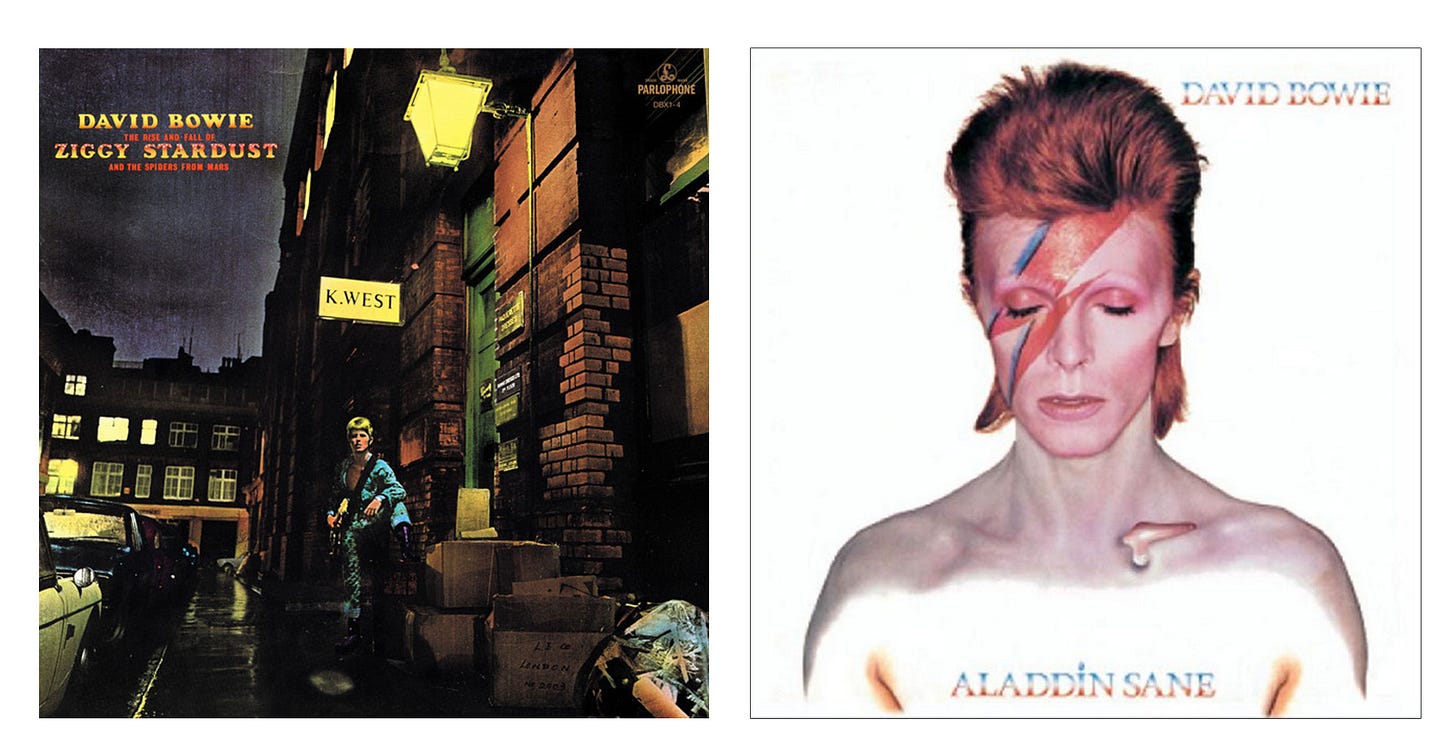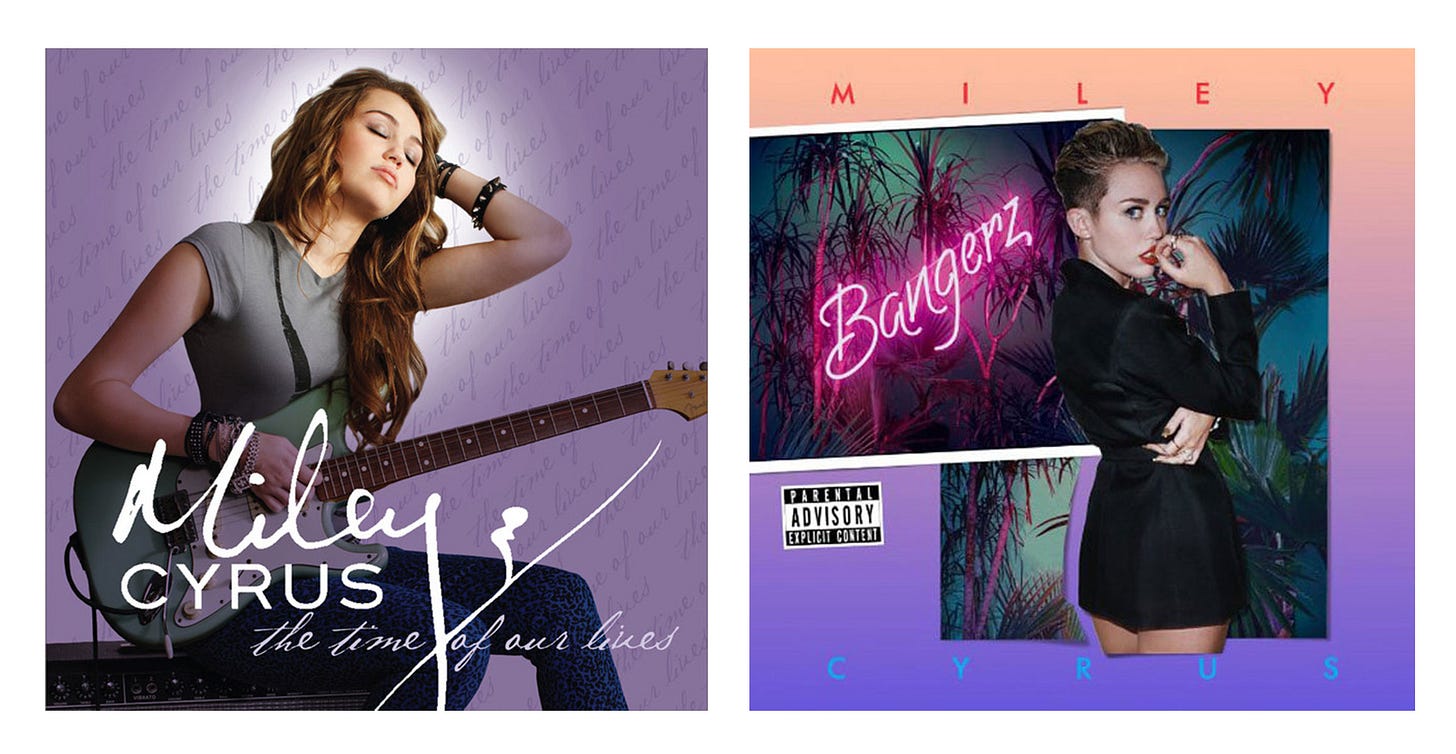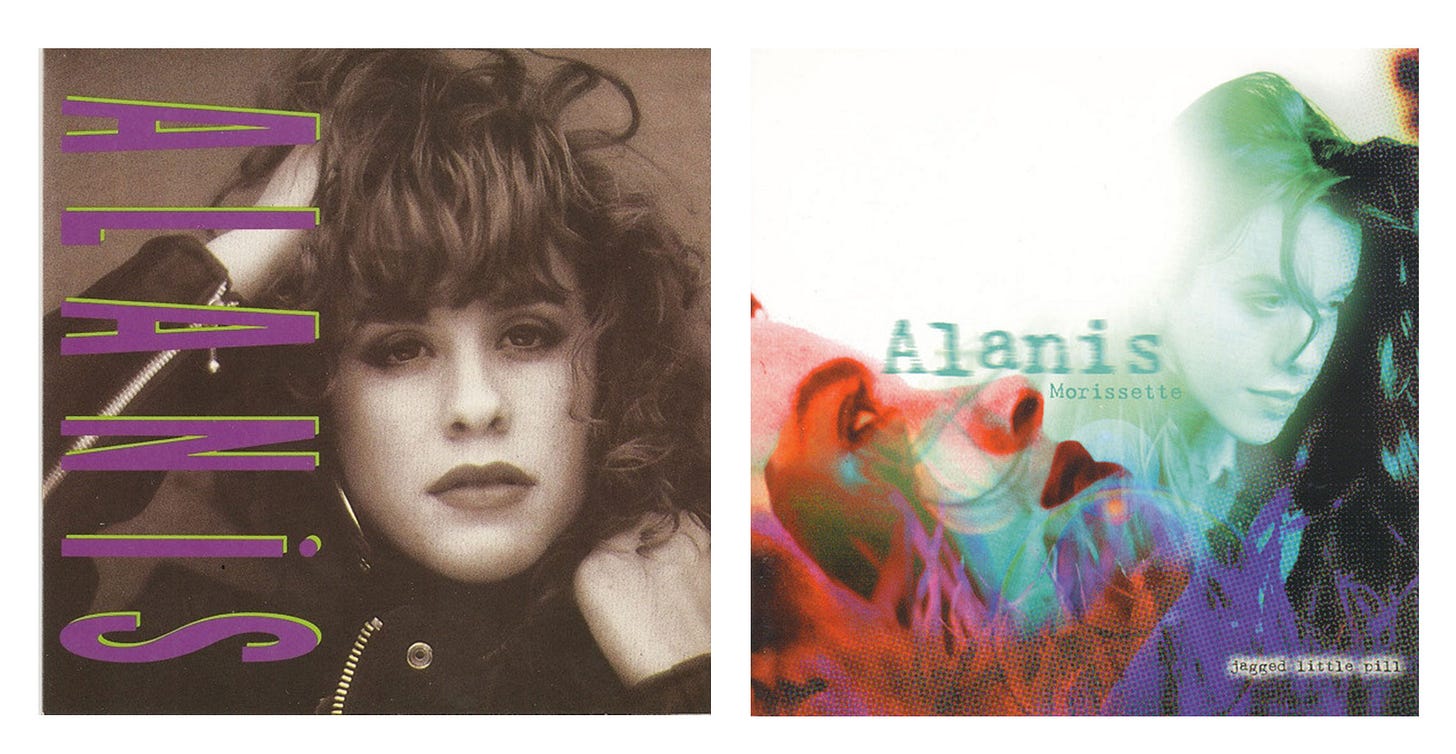The Many Ways in Which Musicians Reinvent Themselves
Ringing in the new year with album art transformations
Another new year, another list of things to do more of (like this newsletter), be more mindful of, make more time for, and so on… The weeks leading up to and after January 1st are filled with reflections, resolutions, Instagram posts on what’s “in” and what’s “out,” lists of milestones achieved, and goals for the year to come. It’s a period of change and transition.
Musicians and artists are always toying with reinvention, whether it’s experimenting with a new genre, recording process, collaborator, or image. Billie Eilish dyes her hair every album cycle. Dua Lipa archives her entire Instagram feed and swaps her album covers with kaleidoscope versions of the original art. And Taylor Swift grossed over 1 billion dollars for her Eras tour showcasing the many transformations throughout her career.
We can trace the desire for newness back to the 70s with David Bowie, who, according to Discogs, “reinvented himself time and time again.” From folk to rock to glam, the British artist never stayed within one persona too long. He even switched identities, creating Ziggy Stardust in 1972 popularizing alter egos. Today, we have him to partially thank for Beyoncé’s Sasha Fierce and Megan Thee Stallion’s Tina Snow.

But what is the distinction between naturally evolving into a diverse artist versus radically changing your sound and image as one? In late 2013, Disney Channel star Miley Cyrus rang in a new era with her fourth studio album Bangerz, three years after her last album, Can’t Be Tamed, which the singer dismissed “as an irrelevant relic from another life,” according to Billboard.
On the cover of Bangerz, we see Cyrus sporting a shaved blonde pixie cut, dressed in a short black blazer, fingers gingerly placed between her lips, staring coyly into the camera. The album art, while more edgy than her previous covers, was deemed scandalous and sexually charged back in 2013. These calls of outcry were most likely due to the juxtaposition of her identity as a child star and the music videos released aside the two lead singles off Bangerz, “We Can’t Stop” and “Wrecking Ball.” Between both videos, the audience watches as Cyrus performs the act of a “provocative” party girl, twerking in skin-tight white outfits and swinging nude amidst a demolished set. The creative is purposefully a total 180 from her persona as Hannah Montana, the Disney Channel character she officially and adamantly left behind in 2011.

Twenty years earlier, another former television-turned-pop star fiercely broke the mold and transformed into the voice of her generation with angsty poetic punk vocals on Jagged Little Pill. Before her hit singles “Ironic” and “You Oughta Know,” Alanis Morissette was known as the Canadian platinum pop star Alanis, singing over heavily electronic synth backing tracks with a full perm. The cover of her 1991 debut album Alanis is a classic copy-and-paste pop industry standard, a simple black and white portrait with her name imprinted overtop. In classic 90s pop fashion, Morissette continues the cookie-cutter pop with a choreographed routine in the music video for the lead single “Too Hot.”
What makes Alanis’ transformation, to rebellious “angry white female” as Rolling Stone dubbed her, so satisfying is the journey she endured to introduce Jagged Little Pill to the world. The substance of the album, for one, is pulled from her difficult experiences during her former life as a child star. In a 2002 interview with The New York Times, she commented, “'I just feel like there was this illusion that I had to pick between this complex kind of relationship with older men and younger women in the industry, or no music being expressed…'' She elaborates more on the struggle of that power dynamic, accepting it as a part of who she is today.
Alanis eventually left Canada for Los Angeles and found a collaborator in producer Glen Ballard. They pitched a demo of Jagged Little Pill to labels left and right, only to be rejected, until they met Guy Oseary of Maverick who signed her and proved those other record execs wrong, selling 10 million copies of the record alone in 1996.
Looking at Alanis and Jagged Little Pill side by side, the reinvention is stark. Alanis feels flat and one-dimensional, while the collage on the cover of Jagged Little Pill contains multitudes. The translucent photos of the singer seep into one another, showcasing various perspectives. Black and white versus a full spectrum of color… the juxtapositions go on.

Musicians will continue to reinvent and evolve themselves in 2024 and beyond, it’s part of why we’re infatuated with the art form. I’d be remiss not to include The Beatles transforming their sound every album, Lady Gaga’s pipeline from meat dress to Tony Bennett collaborator, artists like Cher and Caroline Polachek breaking out on their own, and Britney returning back from rehab to iconically start off her fifth album, “It’s Britney, bitch.”
The Art of Cover Art is a free educational and inspirational resource. If you have $5/ month to spare, it would be very helpful in furthering my research. Or, if you think a friend might enjoy this newsletter, the best way to pay it forward is by sharing!




Loved seeing the transformations side by side like this. While I knew that Alanis Morissette has been a child star in Canada, I'd never see any pictures of her from that time. That's a trip!